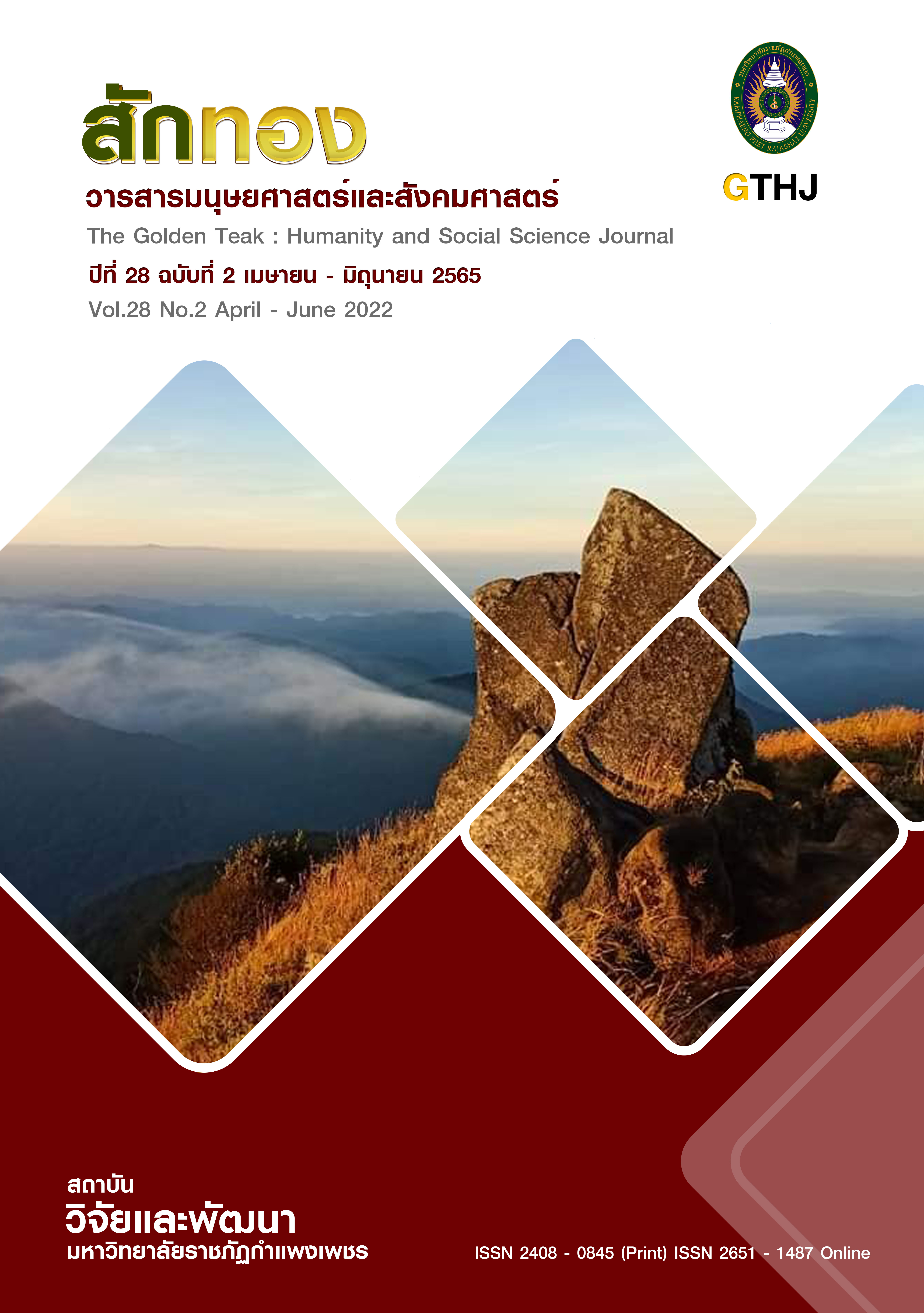The Correlation Between Knowledge Management, Innovation Management, and Supply Chain Risk Management Influence Supply Chain Performance of the Automotive Parts and Parts Producers
Main Article Content
Abstract
The purposes of this study were to study the confirmatory of knowledge management, Innovation Management, and Supply Chain Risk Management that affects the efficiency of the supply chain of the Automotive Parts and Parts Producers with empirical data. quantitative research collects data with executives of Automotive Parts and Parts Producers. The samples were 460. The samples were received by simple random sampling. The reliability of the test was .884. The statistic used to analyze data comprised of frequency, percentage, mean, standard deviation, and confirmatory factor analysis. The research result was. The confirmatory factor analysis consisted of 18 observed variables. The result found that factor loading between 0.27-0.94 at significance level 0.01. The results showed that the conceptual model aligns with the empirical data. relationship management, knowledge management innovation management, and supply chain risk management will result in strategic management. risk assessment management appraisal Includes both commercial and sustainable development activities that are linked to efficient supply chain performance from upstream to waste management.
Article Details

This work is licensed under a Creative Commons Attribution-NonCommercial-NoDerivatives 4.0 International License.
บทความที่ได้รับการตีพิมพ์เป็นลิขสิทธิ์ของวารสาร สักทอง : วารสารมนุษยศาสตร์และสังคมศาสตร์ สถาบันวิจัยและพัฒนา มหาวิทยาลับราชภัฏกำแพงเพชร
ข้อคิดเห็นใดๆ ที่ปรากฎในวารสารเป็นวรรณกรรมของผู้เขียนโดยเฉพาะ ซึ่งมหาวิทยาลัยราชภัฏกำแพงเพชรและบรรณาธิการไม่จำเป็นต้องเห็นด้วย
References
Akhavan, P., Elahi, B., & Jafari, M. (2014). A new integrated knowledge model in supplier selection: The case of an Asian automotive supply chain. Education, Business and Society Contemporary Middle Eastern Issues, 7, (4), 333-368.
Atthasit C. (2018). Electric cars and the Thai car industry. [Online]. Available: https://www.gsbresearch.or.th/wp-content/uploads/2018/03/16IN_hotissue_car_electronic_detail.pdf [2020, July 20].
Ar, I. M., & Baki, B. (2011). Antecedents and performance impacts of product versus process innovation. European Journal of Innovation Management, 14, (2), 172-206.
Blunch, J. N. (2013). Introduction to Structural Equation Modeling Using IBM SPSS Statistics and AMOS. 2 nd ed. Croydon: SAGE.
Byrne, B. M. (2016). Structural Equation Modelling with AMOS: Basic Concepts, Applications, and Programming. (3 rd ed.). New York: Routledge.
Department of Industrial Works. (2020). Factory Statistics. [Online]. Available: http://api.diw.go.th/public/tableauPublic.jsp?name=A1&ms=1608038652580 [2019, July 20].
Electricity Generating Authority of Thailand. (2017). Electric Infrastructure Development Plan Report to support electric vehicles of Thailand. [Online]. Available: https://www.egat.co.th/images/businessop/EGAT-EV-Plan-2560.pdf [2019, July 20].
IEA. (2020). Global EV Outlook 2020 Entering the decade of electric drive?. [Online]. Available: https://www.iea.org/reports/global-ev-outlook-2020 [2021, February 7].
Hair, J. F, et al. (2006). Multivariate Data Analysis. (6 th ed). New Jersey: Pearson Education.
Ho, W., Zheng, T., Yildiz, H. and Talluri, S. (2015). Supply chain risk management: a literature review. International Journal of Production Research, 53, (16), 5031- 5069.
Kanlaya W. (2013). Structural Equation Analysis (SEM) by AMOS. Bangkok: Samlada.
kasikorn research. (2017). The electric vehicle era is booming, supporting the rising Thai SMEs. [Online]. Available: https://www.kasikornbank.com/th/business/sme/KSMEKnowledge/article/KSMEAnalysis/Documents/Electric-Vehicle_Full.pdf [2020, August 6].
Mongkol A. (2019). Structural Relationship Model of Organizational Learning Capability, Organizational Innovativeness, Competitive Advantage and Firm Performance: An Empirical Investigation from Parts Automotive in Thailand. Journal of Modern Management Science, 12, (2), 1-20.
National Science and Technology Development Agency. (2017). Electric Vehicle Industry. [Online]. Available : https://waa.inter.nstda.or.th/prs/pub/whitepaper_EVV2.pdf [2020, July 20].
Nongluk W. (1999). LISREL Model: Statistical Analysis for Research. (3 rd ed.). Bangkok : Chulalongkorn University.
Peerayos Y, & Trinate T. (2020). Development of Technology Innovation to Promote Competitiveness of Industry Entrepreneurs Automotive Parts Manufacturing in Thailand. Journal of Suvarnabhumi Institute of Technology, 6, (1), 480-494.
Schroeder M. A.. (1990). Diagnosing and Dealing with Multicollinearity. Western Journal of Nursing Research, 12, (2), 175-178.
Schumacker, R.E. & Lomax, R.G. (1996). A beginner’s guide to structural equation Modelling. Mahwah, NJ: Lawrence Earlbaum.
Shakerian, H., Dehnavi, H. D., & Shateri, F. (2016). A framework for the implementation of knowledge management in supply chain management. Procedia-Social and Behavioural Sciences, 230, 176-183.
Tatchawan K. (2018). Competitiveness of Thailand’s Electric Vehicle Industry. Nida Business Journal. [Online], 3, Available : http://mba.nida.ac.th/en/books/read/cba6f630-ff6a-11e8-bcf6-97d5b95cf079 [2020, July 16].
Thailand Automotive Institute. (2019). Automotive Industry Conditions Monthly Quarterly Reports on the Conditions of the Thai Automotive Industry August 2019. [Online]. Available : http://data.thaiauto.or.th/iu3/index.php?option=com_flexicontent&view=items&cid=104&id=749<emid=282 [2020, October 6].


